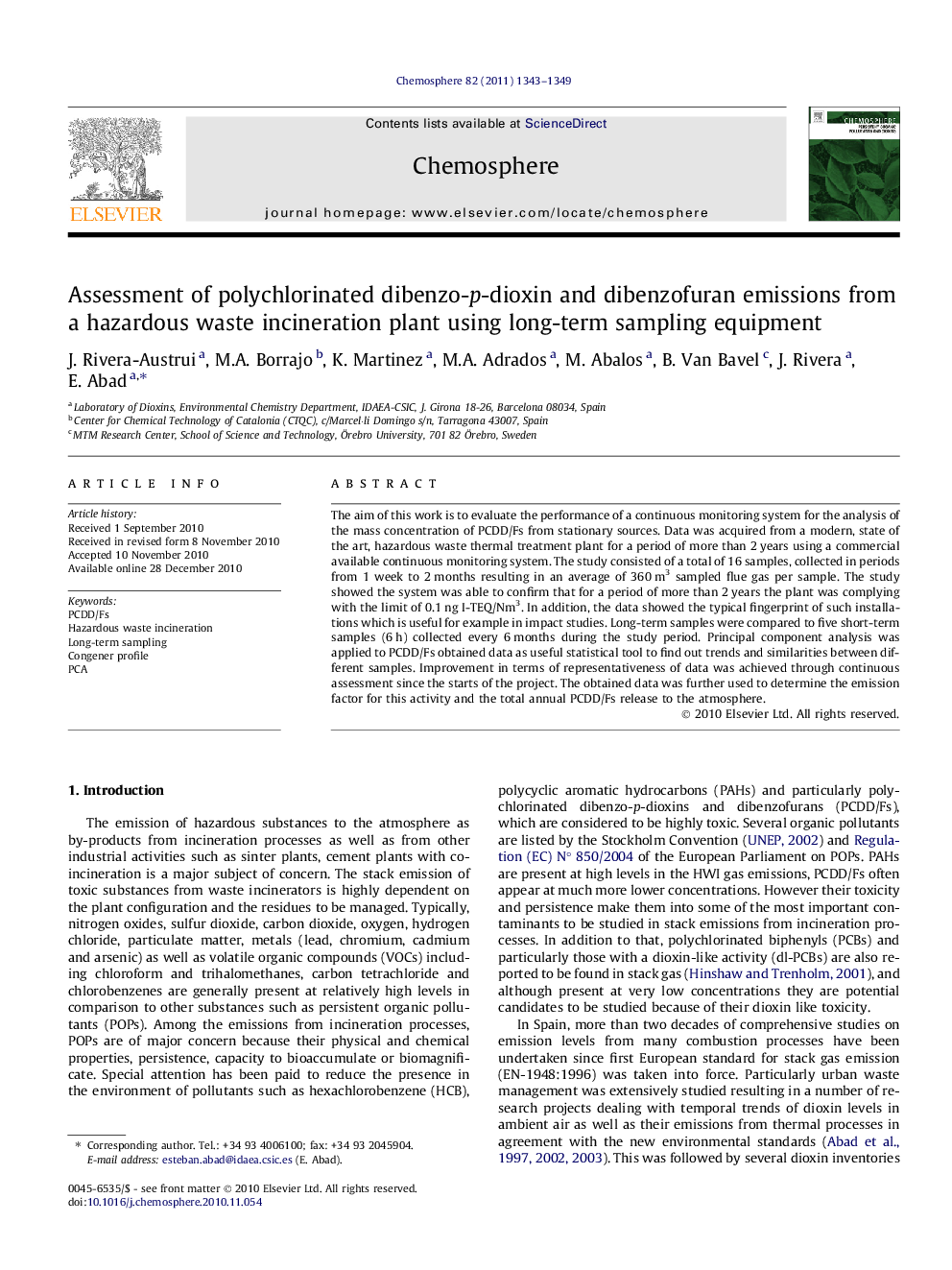| Article ID | Journal | Published Year | Pages | File Type |
|---|---|---|---|---|
| 4411309 | Chemosphere | 2011 | 7 Pages |
The aim of this work is to evaluate the performance of a continuous monitoring system for the analysis of the mass concentration of PCDD/Fs from stationary sources. Data was acquired from a modern, state of the art, hazardous waste thermal treatment plant for a period of more than 2 years using a commercial available continuous monitoring system. The study consisted of a total of 16 samples, collected in periods from 1 week to 2 months resulting in an average of 360 m3 sampled flue gas per sample. The study showed the system was able to confirm that for a period of more than 2 years the plant was complying with the limit of 0.1 ng I-TEQ/Nm3. In addition, the data showed the typical fingerprint of such installations which is useful for example in impact studies. Long-term samples were compared to five short-term samples (6 h) collected every 6 months during the study period. Principal component analysis was applied to PCDD/Fs obtained data as useful statistical tool to find out trends and similarities between different samples. Improvement in terms of representativeness of data was achieved through continuous assessment since the starts of the project. The obtained data was further used to determine the emission factor for this activity and the total annual PCDD/Fs release to the atmosphere.
Research highlights► Long-term continuous sampling of dioxins was found to be more reliable than short-term sampling. ► The current emission factor for the incineration plant was found to be an overestimation. ► Based on the measured data a new emission factor was calculated using long-term sampling data. ► PCA was found to be a useful tool to reveal subtle differences in the ‘incineration’ dioxin pattern.
